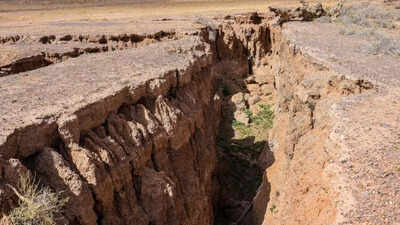Scientists have recently discovered the remains of an ancient colossal whale in Peru, which may be the heaviest animal to have ever lived.
Over the past decade, researchers have been excavating the fossils of this new species, called Perucetus colossus, in the Ica desert in Peru. The findings were published in a Nature journal on August 2.
The study reveals that this ancient giant weighed between 94 and 375 tons (85 and 340 metric tons) and had a length of around 66 feet (20 meters).
The Perucetus colossus is believed to be “possibly the heaviest animal ever,” according to study author Eli Amson, a paleontologist at the State Museum of Natural History in Stuttgart, Germany, although it may not have been the longest.
LAST OF NEARLY 100 WHALES BEACHED IN AUSTRALIA EUTHANIZED DESPITE MASSIVE ATTEMPTED RESCUE EFFORT
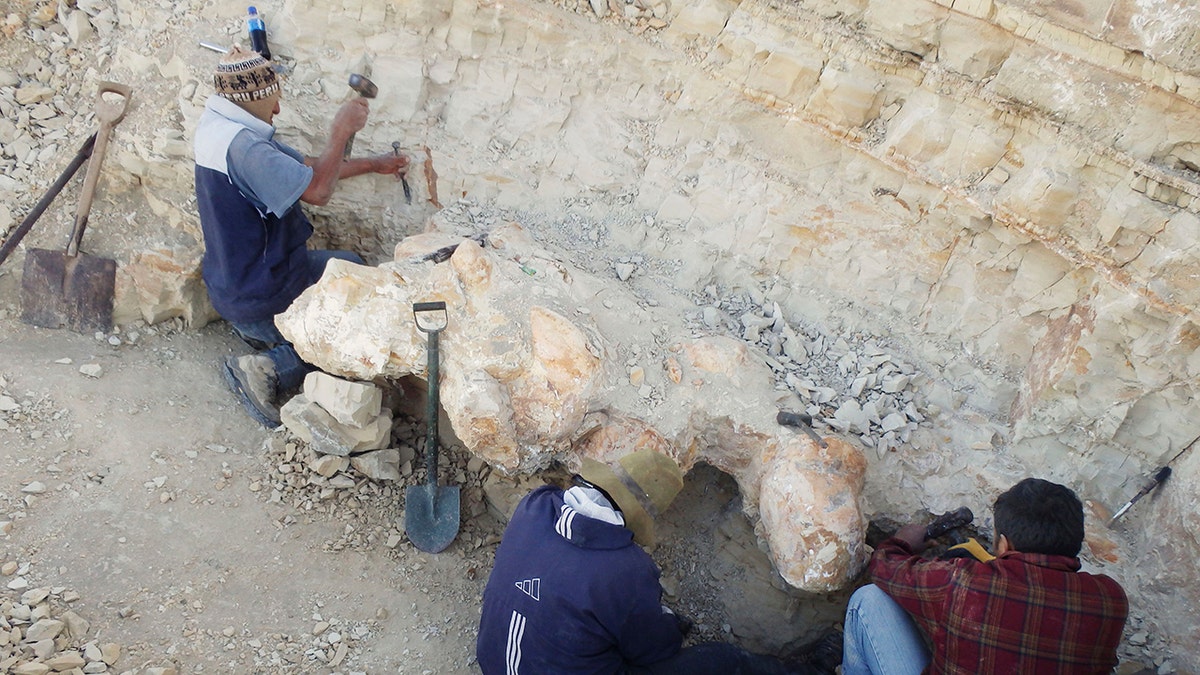
Scientists have discovered the remains of Perucetus colossus, an ancient whale, in the Ica Province in Peru. The colossal whale could potentially be the largest animal ever found. The fossils were unveiled in a Nature journal on August 2, 2023. (Giovanni Bianucci/Department of Earth Sciences, University of Pisa, via AP)
If confirmed, the Peruvian whale would surpass the blue whale as the heaviest animal ever discovered. Blue whales, which can weigh around 200 tons (180 metric tons) and reach lengths of more than 100 feet (30 meters), currently hold the title.
Hans Thewissen, a paleontologist at Northeast Ohio Medical University, commented on the finding, stating that it is “exciting to see such a giant animal that’s so different from anything we know.”
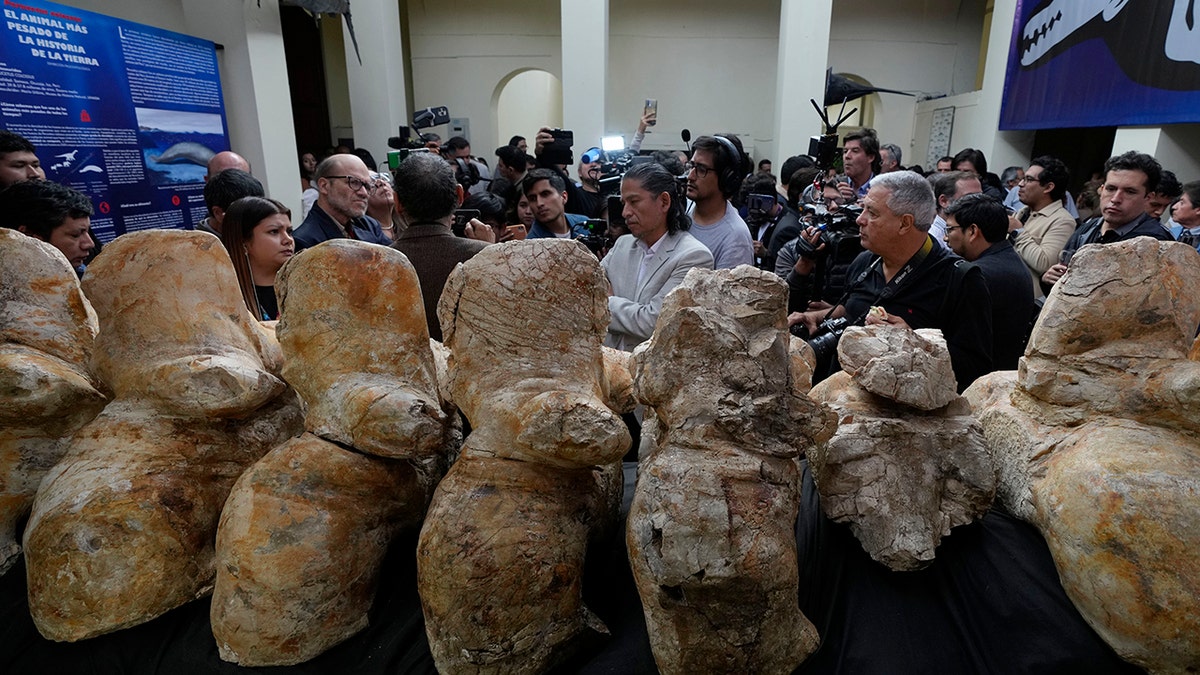
Visitors and journalists attend a presentation introducing a newly found species named Perucetus colossus, or “the colossal whale from Peru”, in Lima, Peru, Wednesday, Aug. 2, 2023. (AP Photo/Martin Mejia)
The bones of the ancient whale were first discovered by Mario Urbina from the University of San Marcos’ Natural History Museum in Lima more than a decade ago. An international team of researchers has since been excavating the fossils in the Peruvian desert, known for its abundance of marine fossils.
FLORIDA WATER TOPPED 100-DEGREES TWICE THIS WEEK, MAY HAVE SET WORLD RECORD: ‘THIS IS A HOT TUB’
So far, the team has uncovered 13 vertebrae, four ribs, and a hip bone, each weighing over 220 pounds and measuring nearly 5 feet long.
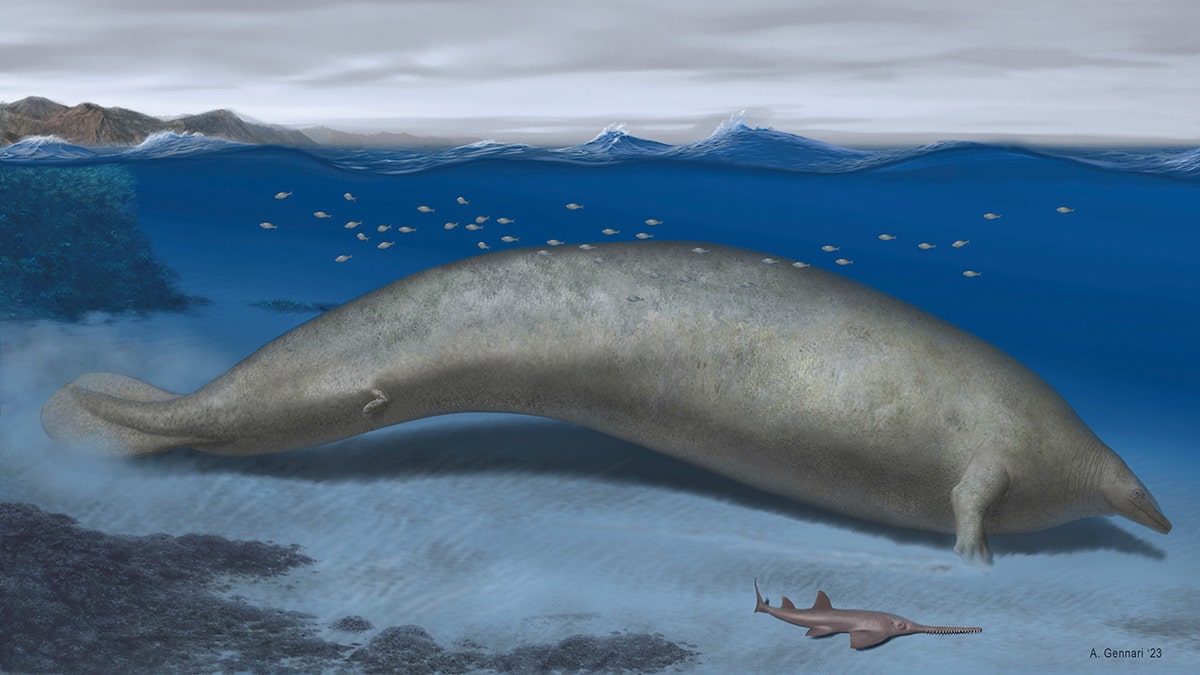
Paleontologists uncover the remains of Perucetus colossus, or “the colossal whale from Peru,” during an excavation in Lima, Peru. The fossils are estimated to be 39 million years old and are described as being “unlike anything I’ve ever seen,” according to study author Alberto Collareta from the University of Pisa. (Alberto Gennari/Nature via AP)
The fossils of the Perucetus colossus are around 39 million years old and have fascinated paleontologists due to their unique characteristics.
The researchers have used 3D scanners to study the surface of the bones and have drilled into them for further analysis.
By examining the partial skeleton, the scientists have estimated the size and weight of the whale.
The Peruvian whale is believed to be heavier than the blue whale due to the density and weight of its bones, according to Amson.

Mario Urbina, the paleontologist who discovered the whale’s bones, poses for a photo in Lima, Peru. The partial skeleton of the Perucetus colossus has shed light on the size, weight, and characteristics of this ancient giant. (AP Photo/Martin Mejia)
The density of the bones suggests that this whale likely inhabited shallow, coastal waters. Other coastal dwellers, such as manatees, have heavy bones which help them stay close to the seafloor, according to the authors.
BIDEN ADMINISTRATION BLASTED FOR ‘HYPOCRISY’ ON OFFSHORE WIND AS IT SCRAMBLES TO PROBE WHALE DEATHS
Amson mentioned that without the skull, it is difficult to determine the whale’s feeding habits and how it sustained its massive body.
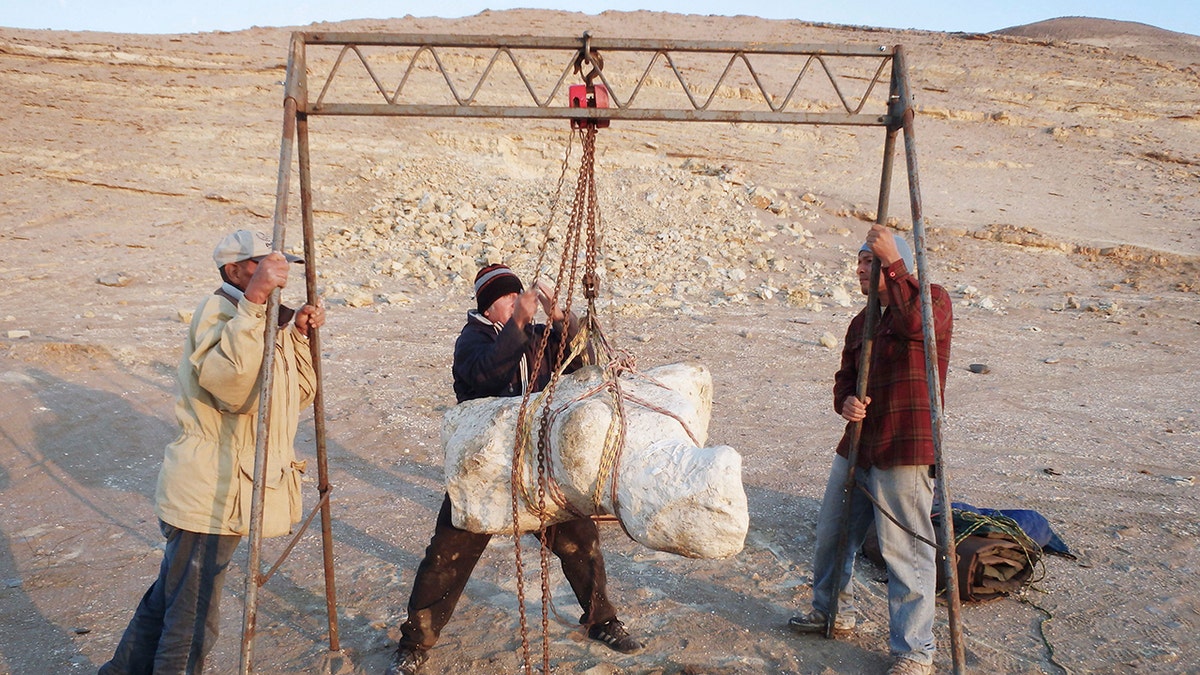
A partial skeleton of Perucetus colossus is transported from the Ica desert to the Museo de Historia Natural, Universidad Nacional Mayor San Marcos, in Lima, Peru. The fossils are estimated to be 39 million years old and shed light on the characteristics of this ancient whale. (Giovanni Bianucci/Department of Earth Sciences, University of Pisa, via AP)
CLICK HERE TO GET THE FOX NEWS APP
The ancient whale’s diet may have consisted of scavenging for food or consuming large quantities of krill and other tiny sea creatures.
Thewissen speculated that this whale may have had a completely different feeding method that has yet to be discovered.
The Associated Press contributed to this report.








